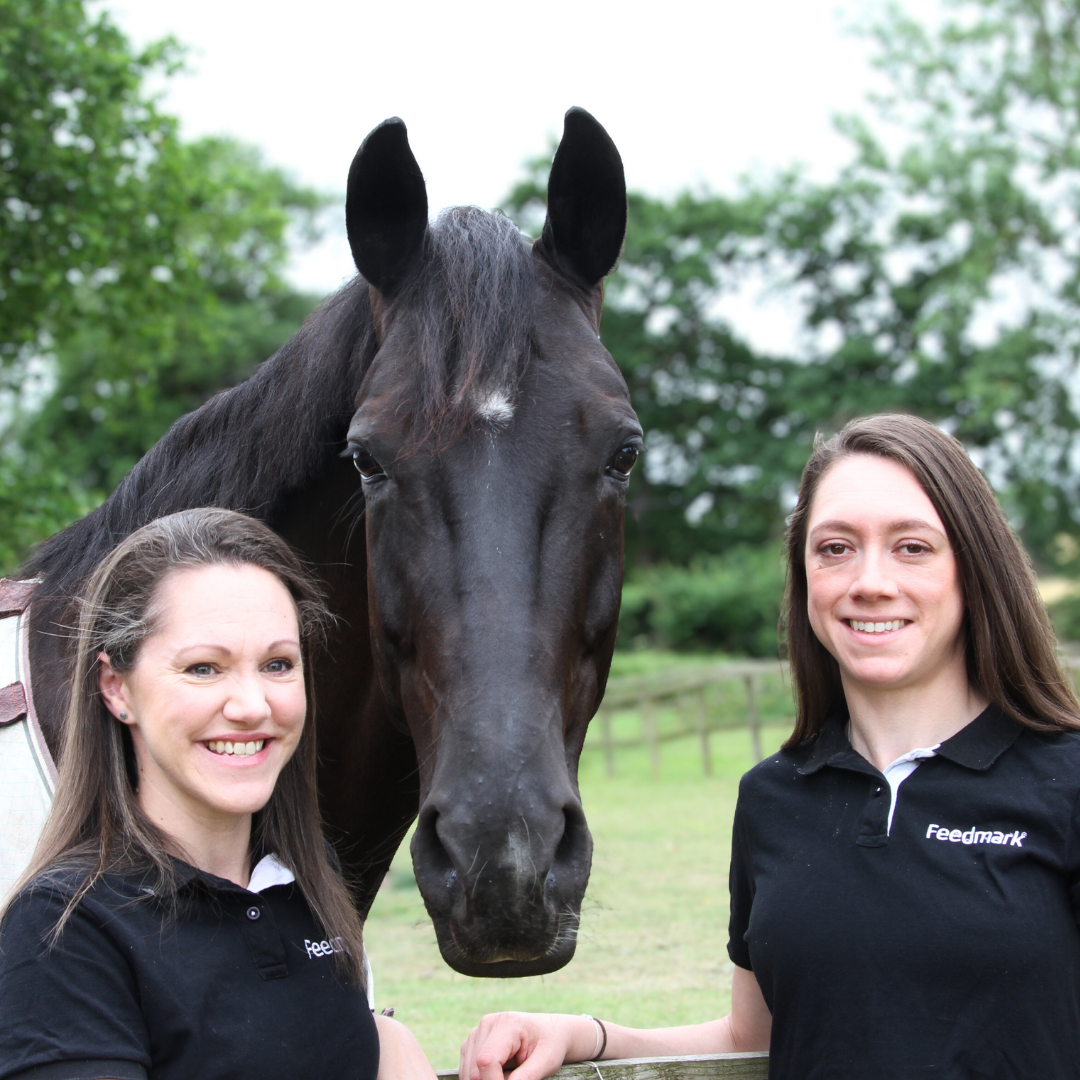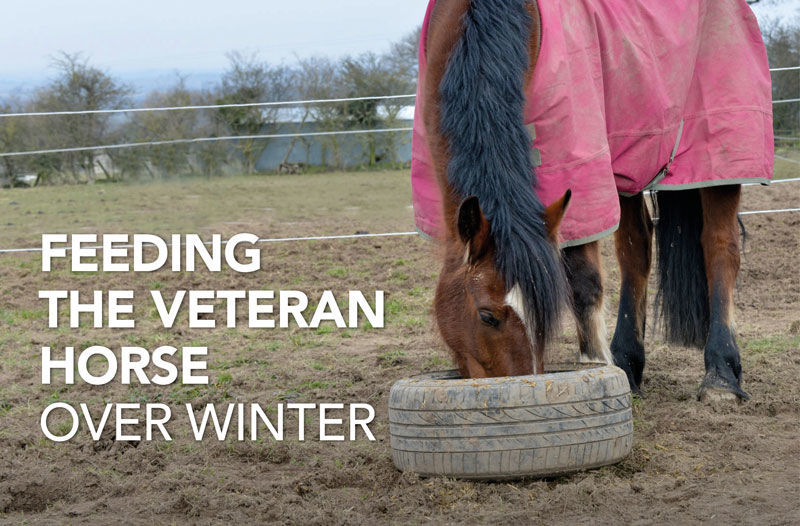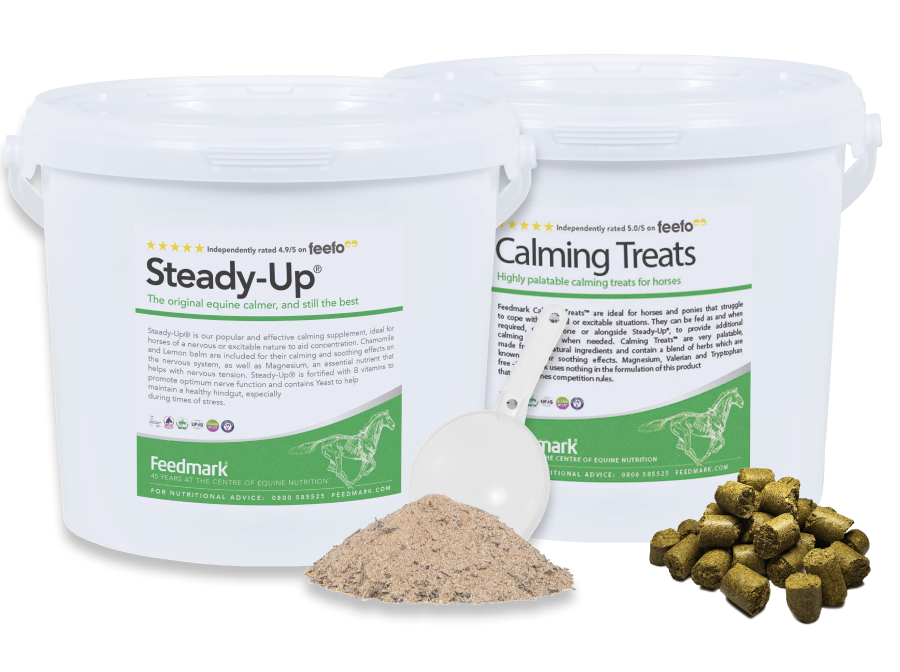Veteran horses are classed as those aged 15 yrs and older and make up 25% to 29% of the overall UK horse population (Ireland et al. 2011). Due to modern husbandry, it is more common to see horses surviving comfortably into their twenties and thirties, and even into their forties in some cases (Graham, 2002; Paradis, 2002). Although ageing itself is not a disease, the ageing process often results in changes that predispose the older horse to disease (Paradis, 2002).
Diseases and health concerns that commonly affect veteran horses include dental issues, lameness, respiratory issues, degenerative diseases such as PPID (Cushing’s), colic and arthritis (Brosnahan and Paradis, 2003; McGowan et al. 2010; Mueller et al, 2018) and as such the care and feeding of veteran horses over the winter months often requires more consideration compared to a younger horse. This article will address some of the common health concerns of veteran horses, and how you can use nutrition to help support these this winter.
NOTE - Although horses are considers to be veterans once they are aged 15 remember to feed the horse in front of you, not their age. If your older horse is doing well on their current diet, there is no need to change it just because they are now aged 15 or older.
The Importance of Dental Health
One of the most common gastrointestinal changes in the old horse is dental health. Ireland et al. (2012) randomly selected 200 horses ages over 15 years to receive a veterinary examination. Dental abnormalities were found in 95.4% of horses, but only reported by 24.5% of owners. This highlights the importance of regular dental examinations for older horse at least once a year, or every six months if the horse has had previous dentition concerns (Paradis, 2002).
As horses age the grinding surface of their teeth is worn down, meaning it becomes more difficult for them to grind down long stem forage such as hay (Paradis, 2002). In addition, the older horse may develop more severe dental issues such as tooth loss and the development of ‘wave mouth’, which occurs when the molar teeth are not correctly aligned and the teeth wear down unevenly as the horse chews (Lowder and Mueller, 1998; Easley, 2002). These issues increase the risk of poor digestion of nutrients and possible esophageal and intestinal obstructions (Paradis. 2002).
Common symptoms of poor dentition in the older horses include;
- Quidding (the horse spits out or drops moist, half chewed bits of forage)
- Longer length of hay in droppings (>4cm)
- An increase of colic episodes
- Weight loss
- Becoming fussy with hay or feed
Horses that are struggling with eating their forage due to poor dentition should be provided with forage sources that are easy for them to chew. In many cases this means reducing, or even removing, hay being fed and replacing this with soft feeds such as chaff, fibre nuts and sugarbeet. For those horses with very poor teeth, or with missing teeth, these feeds may need to be soaked into a mash that does not require much chewing.
NOTE - It is important to remember that these forage replacers should be fed at the same daily intake as hay. For instance, if you are feeding 5kg of hay overnight, you will need to feed 5kg of chaff, fibre nuts and sugarbeet if you remove all hay. Feeding forage replacers can be tricky to work out so do contact a qualified nutritionist to discuss this if needed.
Respiratory health
In the winter months many horses spend more time stabled compared to winter months, with several studies showing that between 70 – 75% of horses in the UK are stabled for at least some of the time in winter (Mellor et al. 2002; Hotchkiss et al. 2007). Increased stabling exposes horses to higher levels of airborne dust (Fleming et al. 2008), which increases the risk of several equine respiratory disorders (Wright et al. 2009; Garlipp et al. 2010). As veteran horses already have a higher risk of respiratory disorders, it is important to reduce the amount of airborne dust in the stable over the winter months.
To help reduce the risk of respiratory issues in your veteran horses, hay should be soaked for 30 minutes prior to feeding, as this has been shown to result in the greatest reduction of airborne dust (Moore-Colyer, 1996). This study, and a later study by Blackman and Moore-Coyler (1998), showed that, when compared to dry hay, soaking hay for 30 minutes reduced respiratory dust particles by 90%, whereas soaking for 12 hours made no significant further reduction of respiratory dust particles. Blackman and Moore-Coyler (1998) also showed that steaming hay for 80 minutes also reduced RDC by 90%, and unlike soaked hay, resulted in no loss of nutrient content.
Interestingly a later study by Blundel et al. (2012) found that soaked hay that was then stored overnight in a temperature-controlled environment (15°C) had a higher level of RDA compared to steamed high, which indicates that the RDA levels in soaked hay increase as the hay dries. It is therefore recommended to feed soaked hay soon after it is removed from the water, rather than leaving it to drain for several hours.
Nutrient Digestion
Older horses have more difficulty digesting nutrients, especially protein, compared to younger horses (Ratz et al. 2021), often leading to a reduction in muscle mass and top line (Paradis, 2002; van Weeren and Back, 2016). It is therefore important to provide the older horse with good quality protein in the diet. This is even more important in the winter months when the diet consists of mainly hay and poor-quality grass, which are both lower in quality protein compared to spring grass.
When deciding what to feed to provide good quality protein a good choice is alfalfa (also known as lucerne), which provides an excellent level of quality protein, especially the amino acid Lysine. Amino acids are the building blocks of protein and Lysine is considered to be the most important amino acid, as it is required for building all proteins in the horse’s body. Horses do not make Lysine themselves, meaning it has to be provided in the diet.
It is also recommended to add a live east to the diet of the veteran horse. Jouany et al. (2008) found that horses supplemented with a live yeast in their diet ate their whole feed ration, compared to horses who did not have a live yeast added to the diet, who often refused a portion of the ration. Older horses tend to become fussier with their feed, especially if they are on medication, so adding a live yeast may help to encourage them to eat. In addition, Jouany et al. (2008) found that adding a live yeast to the horse’s diet improved the ADF digestibility of the ration. ADF (Acid-Detergent Fibre) is the part of fibre that is composed of cellulose and lignin. Both cellulose and lignin are hard for the horse to digest so by using live yeast to improve the digestibility of ADF the horse will get more nutrients from the fibre they are eating, something which is especially important for the veteran horse.
Increased risk of infection
Several studies have shown that older horses have a decrease of lymphocytes in the blood, which indicates that they may be immunosenescence, an age-related decrease in the effectiveness of the immune system (McFarlane et al. 1998). A later study, also by McFarlane et al. (2001), investigated this further and found that both B cells, that produce antibodies, and T cells, which destroy cells that have become cancerous or virus, were decreased. In addition conditions such as PPID have been shown to increase the risk of infections in older horses (McFarlane 2011; Hart et al. 2021; Miller et al, 2021).
To help boost the older horse's immune system over the winter months Vitamin E can be added to the diet. Vitamin E is a powerful antioxidant and in many species, T- and B-cell functions are impaired by vitamin E deficiency whilst vitamin E supplementation has been shown to repair some of the age-related changes in the immune system (Meydani et al. 1989; Pekmezci, 2011). Horses do not make their own Vitamin E and it therefore must be provided in the diet. Most horses get enough vitamin E from the hard feed and grass intake (grass is naturally high in vitamin E) but for horses with additional requirements adding an extra source of vitamin E to the diet is recommended. This is especially important in the winter months when the vitamin E levels of grass are much lower than in Spring or Summer.
Joint health
Lameness is a common concern for older horses, with musculoskeletal issues being the second cause of euthanasia, after digestive issues, for veterans (Brosnahan and Paradis, 2003; McGowen, 2011). Out of 200 horses over the age of 15 years Ireland et al. (2011) found that 83.5%) had a reduction in range of motion in at least one joint, and 18.6% were lame at walk, which increased to 50.5% in trot. An earlier studies had similar findings to Ireland et al. (2011), with McGowen et al. (2010) finding that 50% of horses were lame in one limb, 33% were lame in the forelimbs, 25% were lame in the hind limbs, 2% were lame in all four limbs.
You can learn more about joint health here>
For any advice or questions you may have, please don't hestiate to reach out to our expert nutrition team. You can call 0800 585525 Monday-Friday 8:30am-5:00pm. Email [email protected], or send us a DM on social media.
References
- Blackman, M, and Moore-Coyler, J.S. (1998) ‘Hay for horses: the effects of three different wetting treatments on dust and nutrient content’, Animal Science, 66, (3), pages 745-750
- Blundell, E.L., Adjei, L.J. and Brigden, C.V. (2012) ‘The effect of steaming and soaking treatments on respirable dust content of hay and the potential environmental polluting impact of the waste water produced’, Forages and grazing in horse nutrition, 132, pages 125-128
- Brosnahan, M.M. and Paradis, M.R. (2003) ‘Demographic and clinical characteristics of geriatric horses: 467 cases (1989–1999).’, Journal of the American Veterinary Medical Association, 223(1), pages 93-98.
- Easley, J. (2002) ‘Dentistry and oral disease.’ In: Smith BP, editor. Large animal internal medicine. 3rd edition. St. Louis: Mosby.
- Fleming, K., Hessel, E.F. and Van den Weghe, H.F.A. (2008) ‘Generation of Airborne Particles from Different Bedding Materials Used for Horse Keeping’, Journal of Equine Veterinary Science, 28, (7), pages 408-418
- Garlipp, F., Hessel, E.F., van den Hurk, M., Timmerman, M.F. and Van den Weghe, H.F.A. (2010) ‘The Influence of a Particle Separation Technology on the Generation of Airborne Particles from Different Roughages and Bedding Materials Used for Horses’, Journal of Equine Veterinary Science, 30, (10), pages 545–559
- Graham, B.P. (2002) ‘Dental care in the older horse.’, Veterinary Clinics: Equine Practice, 18 (3), pages 509-522.
- Hart, K., Durham, A., Frank, N., McGowan, C. and Stewart, A. (2021) ‘Recommendations for the Diagnosis and treatment of pituitary pars intermedia dysfunction (PPID).’, Equine Endocrinology Group.
- Hotchkiss, J.W., Reid, S.W.J. and Christley, R.M. (2007) ‘A survey of horse owners in Great Britain regarding horses in their care. Part 1: Horse demographic characteristics and management’, Equine Veterinary Journal, 39, (4), pages 294-300
- Ireland, J.L., Clegg, P.D., McGowan, C.M., McKane, S.A. and Pinchbeck, G.L. (2011) ‘A cross‐sectional study of geriatric horses in the United Kingdom. Part 1: Demographics and management practices.’, Equine Veterinary Journal, 43 (1), pages 30-36.
- Ireland, J.L., Clegg, P.D., McGowan, C.M., McKane, S.A., Chandler, K.J. and Pinchbeck, G.L. (2012) ‘Comparison of owner-reported health problems with veterinary assessment of geriatric horses in the United Kingdom.’, Equine Veterinary Journal, 44(1), pages 94-100
- Jouany, J.P., Gobert, J., Medina, B., Bertin, G. and Julliand, V. (2008) ‘Effect of live yeast culture supplementation on apparent digestibility and rate of passage in horses fed a high-fiber or high-starch diet.’, Journal of Animal Science, 86(2), pages 339-347.
- Lowder, M.Q. and Mueller, P.O.E. (1998) ‘Dental disease in geriatric horses.’, Veterinary Clinics of North America: Equine Practice, 14, pages 365–80.
- McFarlane, D. (2011) ‘Equine pituitary pars intermedia dysfunction.’, Veterinary Clinics: Equine Practice, 27(1), pages 93-113.
- McFarlane, D., Sellon, D.C. and Gibbs, S.A. (2001) ‘Age-related quantitative alterations in lymphocyte subsets and immunoglobulin isotypes in healthy horses.’, American Journal of Veterinary Research, 62(9), pages 1413-1417.
- McFarlane, D., Sellon, D.C., Gaffney, D., Hedgpeth, V., Papich, M. and Gibbs, S. (1998) ‘Hematologic and serum biochemical variables and plasma corticotropin concentration in healthy aged horses.’, American Journal of Veterinary Research, 59 (10), pages 1247-1251.
- McGowan, C. (2011) ‘Welfare of aged horses.’, Animals, 1(4), pages 366-376.
- McGowan, T.W., Pinchbeck, G., Phillips, C.J.C., Perkins, N., Hodgson, D.R. and McGowan, C.M. (2010) ‘A survey of aged horses in Queensland, Australia. Part 2: clinical signs and owners' perceptions of health and welfare.’, Australian Veterinary Journal, 88 (12), pages 465-471.
- McGowan, T.W., Pinchbeck, G.L., Hodgson, D.R. and McGowan, C.M. (2010) ‘Clinical disease and mortality in geriatric horses: Australian perspective.’, In Proceedings of Dorothy Havemeyer Foundation Meeting Equine Geriatric Workshop (p. 23). Boston, MA, USA: Dorothy Havemeyer Foundation.
- Mellor, D.J., Reid, S.W.J., Love, S., Walker, R. and Gettinby, G. (2001) ‘Sentinel practice-based survey of the management and health of horses in northern Britain’, Veterinary Record, 149, pages 417-423
- Meydani, S.N., Meydani, M., Barklund, P.M., Liu, S., Miller, R.A., Cannon, J.G., Rocklin, R. and Blumberg, J.B. (1989) ‘Effect of Vitamin E Supplementation on Immune Responsiveness of the Aged’, Annals of the New York Academy of Sciences, 570(1), pages 283-290.
- Miller, A.B., Loynachan, A.T., Bush, H.M., Hart, K.A., Barker, V.D., Campana-Emard, A.G., Grubbs, S.T. and Adams, A.A. (2021) ‘Effects of pituitary pars intermedia dysfunction and Prascend (pergolide tablets) treatment on endocrine and immune function in horses.’, Domestic Animal Endocrinology, 74, page 106531.
- Moore-Colyer, M.J.S. (1996) ‘Effects of soaking hay fodder for horses on dust and mineral content’, Animal Science, 63, (2), pages 337-342
- Mueller, M.K., Sween, C., Frank, N. and Paradis, M.R. (2018) ‘Survey of human-horse relationships and veterinary care for geriatric horses.’, Journal of the American Veterinary Medical Association, 253 (3), pages 337-345.
- Paradis, M.R. (2002) ‘Demographics of health and disease in the geriatric horse.’, Veterinary Clinics: Equine Practice’, 18(3), pages 391-401.
- Pekmezci D. (2011) ‘Vitamin E and immunity.’, Vitamins and Hormones, 86, pages 179–215.
- Ratz, M.M., Kaczmarek, B.E.A.T.A., Wnuk-Pawlak, E.L.Ż.B.I.E.T.A., Janicka, W.I.K.T.O.R.I.A. and Janczarek, I.W.O.N.A. (2021) ‘Health problems in geriatric horses.’, Medycyna Weterynaryjna, 77(08)
- van Weeren, P.R. and Back, W. (2016) ‘Musculoskeletal disease in aged horses and its management.’, Veterinary Clinics: Equine Practice, 32(2), pages 229-247.
- Wright, R.G., Bebbington, A.M. and Boland, G.J. (2009) ‘Assessment of methodologies to quantify respirable fungal spores in hay for horses’, Journal of Equine Veterinary Science, 29, (5), pages 402-403



